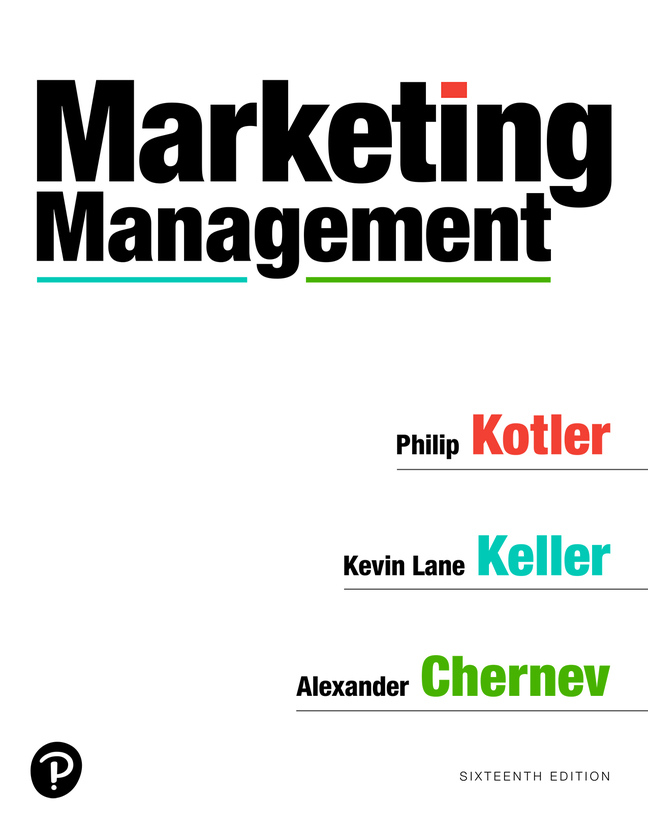Marketing Jan 21, 2022
How Has Marketing Changed over the Past Half-Century?
Phil Kotler’s groundbreaking textbook came out 55 years ago. Sixteen editions later, he and coauthor Alexander Chernev discuss how big data, social media, and purpose-driven branding are moving the field forward.

Riley Mann
A lot has changed in the 55 years since Philip Kotler, widely considered the father of modern marketing, first published his groundbreaking textbook Marketing Management, which has become the most influential marketing textbook in the world.
With the publication of the 16th edition of Marketing Management, we sat down with Kellogg marketing professors Philip Kotler and Alexander Chernev—coauthors on this edition—for their insights into how marketing has changed and where it might be headed.
This interview has been edited for length and clarity.
INSIGHT: How is the new thinking in the field of marketing being reflected in the latest edition of Marketing Management? What has changed and what has stayed consistent over time?
KOTLER: The term “marketing” appeared in the 1900s to describe activities and institutions taking place in markets, and early marketing textbooks were largely descriptive of these activities and institutions. Marketing Management, which was published in 1967, was the first text to use an analytical approach to marketing and include findings of scholarly studies. The book synthesized ideas from economics, behavioral science, organization science, and mathematics to offer breadth, depth, and rigor in addressing marketing issues.
One of the key underlying ideas advanced in the very first edition of the book was that company actions must be driven by customers and their needs. This core principle of customer-centricity has remained the central idea across all editions of the book. The rise of big data, social media, and sophisticated e-commerce has not changed the fact that a key purpose of any company is to create value for its customers.
CHERNEV: Value creation is at the core of our approach to the new edition. Marketing is all about understanding, designing, communicating, and delivering value. This is the foundation of marketing strategy and has not changed with time. What has changed are the tools that companies use to create value. Data analytics, automation, and artificial intelligence are very powerful tools in managing value, but they are just tools. Without a sound strategy guiding their use, they can become a distraction from a company’s core mission.
Not all changes are tactical, however. One important change that affects the business philosophy of many companies is redefining their ultimate purpose. As a result, an increasing number of companies include the creation of societal value in their mission statements. This is an important development that is likely to have long-term consequences on the way these companies act in the marketplace and the way they structure their business processes.
INSIGHT: Glad you brought that up. It is now central to a lot of organizations’ marketing strategies that brands should not just be profitable but have a purpose. How has this idea evolved over the years?
KOTLER: In the old days, a brand simply told you what the product is and does and how it’s priced. But today, a brand is the company’s promise to deliver a specific benefit that addresses a particular need of its customers. Moreover, the promise of many brands extends beyond functionality and reflects certain aspects of customers’ identity.
Take what Unilever has done with Dove soap. It’s now not just a way to clean your skin but to be reminded that all women are beautiful. When it really works, a brand is taking a higher view of the buyer and trying to deliver a promise that will help the buyer advance in some way.
CHERNEV: As more and more products are becoming commoditized, customers are looking beyond functionality for something that is meaningful. It is no longer just about the product. It is also about who the company behind this product is and what this company stands for. As companies understand this, they realize that to be successful in the market, they might have to reinvent their culture and realign it with the values held by their customers.
Having a purpose also helps companies attract and retain employees. If you stand for something, you have a better chance of getting and keeping the right people, which ultimately will enhance profitability. This also extends to a company’s partners. For example, companies like Whole Foods prioritize suppliers that employ environmentally friendly and socially responsible business practices.
INSIGHT: What influence has social media had on marketing theory and practice, and how do you see it offering new opportunities for marketers?
CHERNEV: On a very fundamental level, the theory is still the same: the ultimate goal is to create value. But on a tactical level, there have been many changes. One such change is the proliferation of information.
In the past, advertising was the main tool to inform customers about products. Now, customers can get detailed product information from a variety of sources, both from the company as well as from other customers. And the same goes for companies. The proliferation of social media and the advancement in data analytics enable companies to know in real time not only what customers are doing but also how they are feeling about their brands. So the fundamental goal is still to create value, but the way in which a company can achieve that has changed.
KOTLER: It’s important to realize that today’s consumers are different. They are connected with so many people from so many other parts of the world and can find information with a simple click, without needing a salesman or an ad. Anyone who’s going to buy a car will probably end up seeing a salesman in the dealership, but most will have done a lot of their own work to know about their options. We have to recognize the existence of such an intelligent, well-informed consumer, which means companies have to make big changes to their traditional marketing tools. For instance, are companies wasting money by having big sales forces? Are they as effective as they used to be when there wasn’t so much knowledge available to consumers?
“Today, a brand is the company’s promise to deliver a specific benefit that addresses a particular need of its customers.”
— Phil Kotler
INSIGHT: What changes do you see shaping the future of traditional retailing?
KOTLER: I’m wondering what’s going to happen to in-store shopping. It’s conceivable that you can get everything you want without ever going into a store, so a store has to be special. You have to design a good experience. Then you have to ask: How many stores are we going to need? What kinds of stores will be necessary?
CHERNEV: People tend to go shopping in brick-and-mortar stores for different reasons. Some go for purely utilitarian reasons. They appreciate the fact that they can see what the product looks and feels like in reality and will eventually be able to buy it instantly and take it home. Others go for more hedonic reasons; for them it is more about the shopping experience. They don’t go to brick-and-mortar stores to save time but to spend time. For many, it is also a chance to socialize with friends and family.
The Internet can make the shopping experience more efficient, but it cannot replace, at least not yet, the role traditional stores play as a place for social interaction. So more and more brick-and-mortar retail spaces will likely turn into experiential places where customers go to spend time interacting with others, have a meal, and eventually buy a product or two.
INSIGHT: How do you see marketing’s role changing in organizations? Are there ways that marketing functions might have a larger influence, or a different kind of influence, within organizations?
KOTLER: In the past, marketing was not part of the development of the product. It was only called in after the product was made. Then it was the marketers’ job to sell as much as they could. But now marketing participates in product development. Marketers can offer design ideas and features. Engineers are the masters of the possible, but it is marketers who can best assess value because they are better at understanding the customers’ criteria for buying a product.
Recently, a few companies have abandoned the Chief Marketing Officer position in favor of a Chief Growth Officer or a Chief Customer Officer. But the great majority of companies appoint a CMO to run marketing and to sit with the other officers in the executive suite.
CHERNEV: A challenge with marketing is that in some companies it’s viewed too narrowly and limited to advertising and communication. This creates a problem because marketing is a much broader discipline. It’s really about the science of markets and how to create value. As such, it should be a central function in organizations. Some companies deal with this misperception of marketing by coming up with different labels, whether it’s Chief Growth Officer, or Chief Customer Officer. But these are basically different aspects of what marketing does.
Another big change is the need for transparency and, more important, accountability. As technological developments enable companies to track the impact of their activities, managers are expected to be able to document the return on the company’s marketing investment. This has its advantages and drawbacks. On the positive side, it enables the company to better allocate its marketing resources to areas where they will have the highest impact. On the downside, however, this might focus the company’s marketing efforts on activities that produce short-term effects, to the detriment of activities such as brand building that have a long-term payout.




